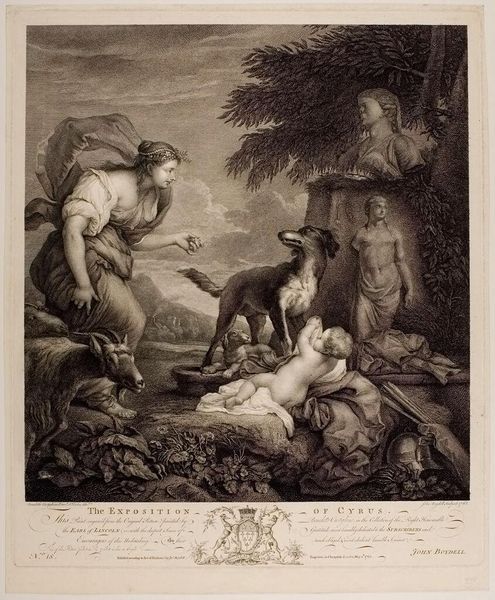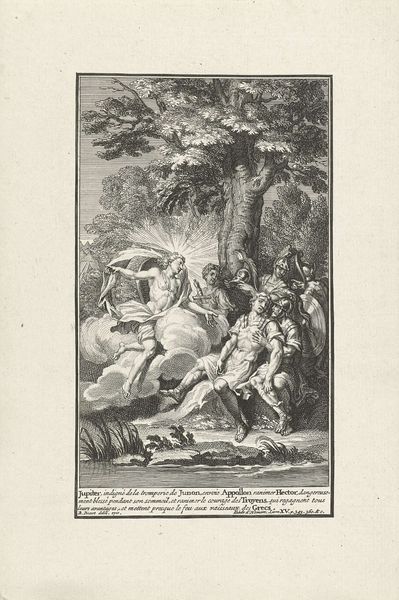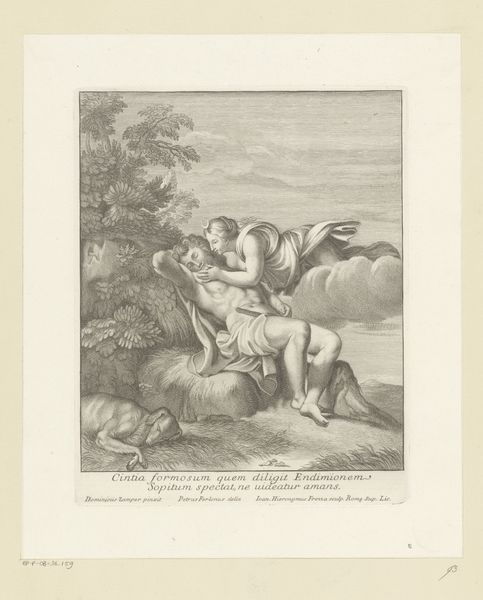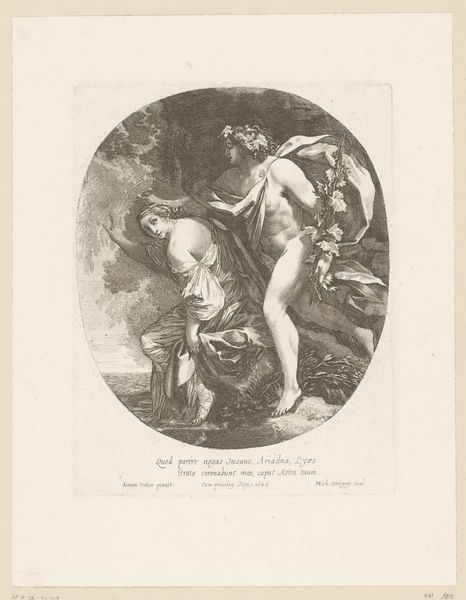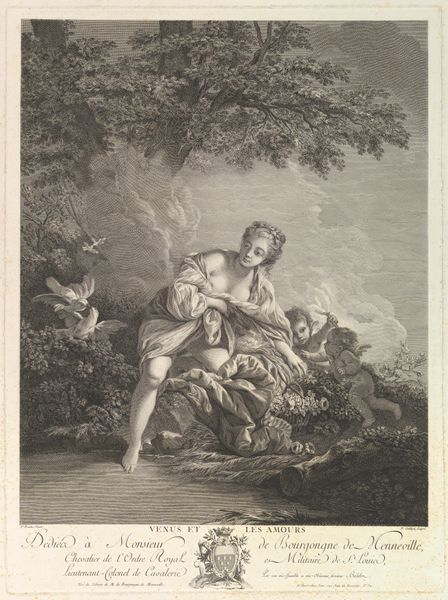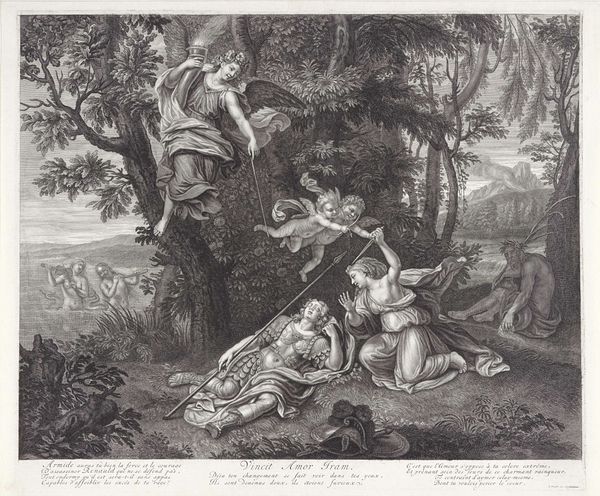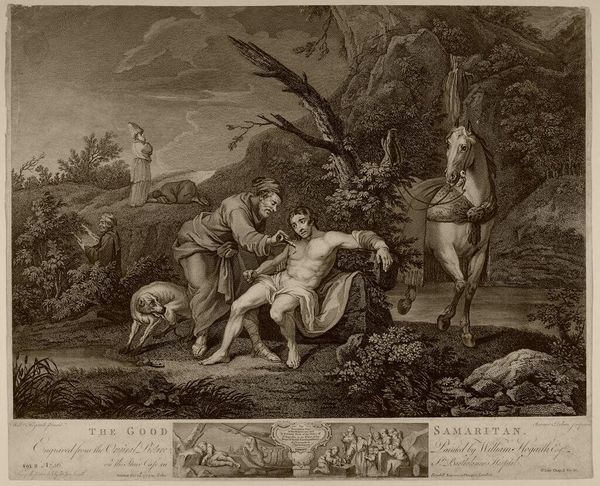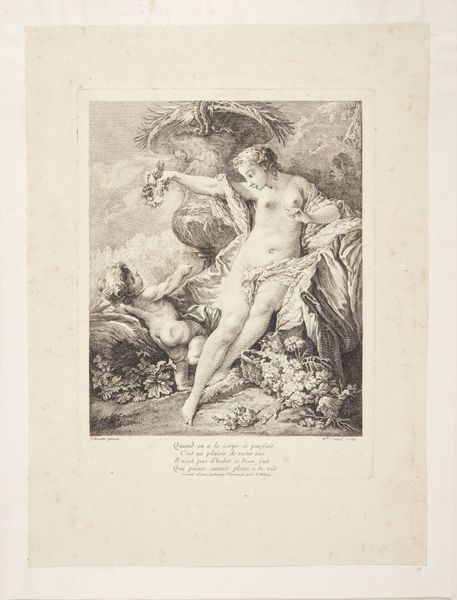
print, engraving
#
allegory
#
baroque
# print
#
old engraving style
#
landscape
#
figuration
#
history-painting
#
graphite
#
engraving
Dimensions: height 551 mm, width 435 mm
Copyright: Rijks Museum: Open Domain
Curator: This is Bernard Picart’s “Zephyrus en Flora,” an engraving from 1701 residing here at the Rijksmuseum. Editor: My first impression is one of tranquil elegance, despite the high baroque style. The delicate linework creates a soothing scene of nature and love. It’s interesting how much detail can be achieved using only incised lines. Curator: It certainly captures a graceful interpretation of the myth, the West Wind Zephyrus, gently crowning Flora, the goddess of flowers and spring, symbolizing the renewal and flourishing of life itself. It is a part of visual and cultural memory around Spring that extends into modernity. Editor: The technical execution is fascinating when we consider the historical context. Engraving at this scale involved significant skill and labor, from preparing the copperplate to executing the design. The process necessitates a collaborative workshop rather than an isolated artist. Curator: Absolutely. Look closely, and we can decipher Zephyrus, crowned with blossoms, embodying the potent energies of growth and fruition; Flora’s relaxed posture mirrors the generative powers of the earth itself. The allegorical cupid is also quite characteristic of the period. Editor: It's also a fascinating example of reproductive printmaking, designed to disseminate an image widely. Think of it as a form of mass media. And let's not forget the materiality: paper, ink, copper – each playing its crucial role. Curator: Indeed. What strikes me is the recurring presence of this allegorical encounter through visual art, mirroring similar narratives across varied civilizations, highlighting humanity’s enduring quest to articulate universal concepts like rebirth, love, and cyclical nature. Editor: Considering its afterlife, I’m curious to know more about the production run and who was buying and distributing these prints? The image wouldn’t have resonated unless there were widespread beliefs in these characters to some degree, a culture willing to purchase and circulate it. Curator: A great point! And in closing, for me this work signifies a rich dialogue—an eloquent discussion on transformation—between cultural mythology, human consciousness and natural phenomenon. Editor: And for me, an example of pre-modern reproducibility, raising compelling questions about artistry and labour in the marketplace of early modern Europe.
Comments
No comments
Be the first to comment and join the conversation on the ultimate creative platform.

